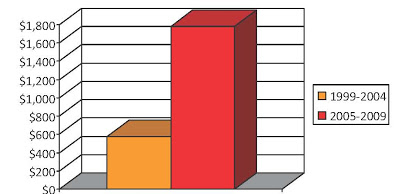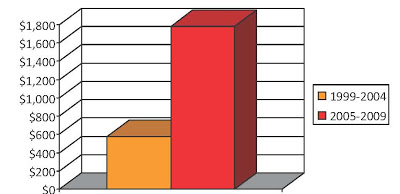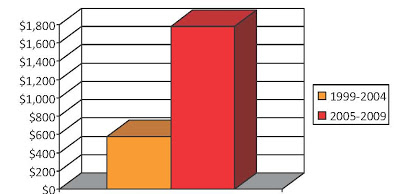by jboullion | Apr 30, 2010 | Uncategorized
From an article by Amy Ryan in the Wausau Daily Herald:
WESTON — After presentations for and against a proposed biomass energy plant to be built across from Rothschild Elementary School, the D.C. Everest Area School Board decided Tuesday to not yet take a position on the project.
Residents fighting the biomass plant were hopeful the board would join the effort to stop its construction.
“I think we have too much material. I would not make a recommendation at this time,” said board member Rita Kasten.
We Energies plans to build a $250 million power plant that burns low-quality and unusable wood and paper waste, powering the Domtar paper mill in Rothschild and providing electricity to homes in portions of Wisconsin. We Energies hopes it will be operating by fall 2013.
Residents at the meeting said they were concerned about the effect the plant might have on the health of the children at the nearby elementary school. Those concerns were shared by board members and district administrators.
“USA TODAY … studied 127,000 schools, and only 23,000 have worse air than Rothschild,” said board member Larry Schaefer. “We’re starting with some pretty poor air already. That’s a concern I have with this plant.”
Rob Hughes, the parent of a 7-month-old, lives near the proposed site of the energy plant and said he is concerned about children playing on the playground near an energy plant.
“In the long term, these particulates cause development of lung disease in children,” he said. “It’s hard to learn if you’re puffing on an inhaler, if you’re light-headed and struggling to breathe.”
Representatives from We Energies and Domtar said the new plant would emit less pollution than the current biomass generators used at Domtar.
“There are very rigorous standards placed by regulatory agencies to protect our welfare,” said Terry Charles, environmental health and safety manager for Domtar. “That includes asthmatics and elderly.”
The plant would cut dependence on fossil fuels, reduce acid rain and be nearly carbon-neutral, the environmental advocacy group Clean Wisconsin and the U.S. Forest Service have said.
by jboullion | Apr 29, 2010 | Uncategorized
From a story on WXOW-TV:
LA CROSSE, Wisconsin (WXOW) Dairyland Power serves a half a million households in their system.
Currently, more than 90 percent of their energy is produced from coal.
However, officials say Dairyland wants to have 25 percent of their power be produced by sustainable renewables, like wind and solar, by 2025.
Dairyland isn’t the only one looking at making a transition away from coal.
Today, Secretary of State Building Commission David Helbach spoke at UW-L about how Wisconsin is trying to covert its state institutions from coal consumers.
There are 16 heating state plants that heat and cool institutions using some amount of coal.
These heating plants can be found at variety of places from government buildings to college campuses, including UW-La Crosse.
Secretary of State Building Commission David Helbach says, “Coal has about twice the pollutants as natural gas so just by changing the fuel you reduce your emissions by half.”
The state wants to transition the biggest users of coal first, which are not university’s like UW-L.
That means the university will be put on the back burner.
Helbach, “We’d like to do some of the other plants first so this plant may not be until the first round, maybe on the second or third round”
Since Dairlyand’s transition can’t happen over night either, it is taking steps to make coal burning more environmentally friendly, like recycling by it byproducts and installing a scrubber system and bag house to make air safer.

by jboullion | Apr 7, 2010 | Uncategorized
A commentary by Michael Vickerman, executive director of RENEW Wisconsin:
For Immediate Release
April 7, 2010
For More Information Contact
Michael Vickerman
608.255.4044
mvickerman@renewwisconsin.org
Costs of coal plants keep going up
In recent weeks, some groups have suggested that we maintain our current energy portfolio, continuing to rely heavily on coal-fired generation for a substantial amount of our electricity. These groups claim that gradually moving toward more reliance on local, in-state sources of energy will increase electricity costs. These claims have been thoroughly discredited by two economic studies concluding that electricity bills will decrease with the Clean Energy Jobs Act.
Further, these groups refuse to acknowledge the substantial, ongoing costs associated with coal plants. Since 1999, Wisconsin utilities have spent over $2 billion of customer money keeping old, inefficient coal plants running. For comparison purposes, this sum is nearly triple the utilities’ investment in windpower facilities during the same period. Customers have seen the real and substantial impact of these coal plant costs through rising electricity rates over the past several years. These costs are in addition to the more than $700 million (exclusive of transportation costs) we send out of state each year to pay for the coal to fuel these aging plants. Reliance on dirty, antiquated coal plants leaves Wisconsin in a vulnerable position, unable to predict or control energy costs.
Unlike coal, clean resources like biogas, wind and solar will produce energy throughout their productive lives without requiring costly pollution abatement measures. Going forward, the more renewable energy we add to Wisconsin’s energy resource mix, the less exposed we will be to these downstream liabilities. The avoidance of these regulatory risks is another compelling reason for passing the Clean Energy Jobs Act legislation in this session.
Coal Plant Retrofit Costs (1999-2009)
(in Millions of Dollars)


by jboullion | Apr 7, 2010 | Uncategorized
A commentary by Michael Vickerman, executive director of RENEW Wisconsin:
For Immediate Release
April 7, 2010
For More Information Contact
Michael Vickerman
608.255.4044
mvickerman@renewwisconsin.org
Costs of coal plants keep going up
In recent weeks, some groups have suggested that we maintain our current energy portfolio, continuing to rely heavily on coal-fired generation for a substantial amount of our electricity. These groups claim that gradually moving toward more reliance on local, in-state sources of energy will increase electricity costs. These claims have been thoroughly discredited by two economic studies concluding that electricity bills will decrease with the Clean Energy Jobs Act.
Further, these groups refuse to acknowledge the substantial, ongoing costs associated with coal plants. Since 1999, Wisconsin utilities have spent over $2 billion of customer money keeping old, inefficient coal plants running. For comparison purposes, this sum is nearly triple the utilities’ investment in windpower facilities during the same period. Customers have seen the real and substantial impact of these coal plant costs through rising electricity rates over the past several years. These costs are in addition to the more than $700 million (exclusive of transportation costs) we send out of state each year to pay for the coal to fuel these aging plants. Reliance on dirty, antiquated coal plants leaves Wisconsin in a vulnerable position, unable to predict or control energy costs.
Unlike coal, clean resources like biogas, wind and solar will produce energy throughout their productive lives without requiring costly pollution abatement measures. Going forward, the more renewable energy we add to Wisconsin’s energy resource mix, the less exposed we will be to these downstream liabilities. The avoidance of these regulatory risks is another compelling reason for passing the Clean Energy Jobs Act legislation in this session.
Coal Plant Retrofit Costs (1999-2009)
(in Millions of Dollars)


by jboullion | Apr 7, 2010 | Uncategorized
For Immediate Release
April 7, 2010
For More Information Contact
Michael Vickerman
608.255.4044
mvickerman@renewwisconsin.org
Costs of coal plants keep going up
In recent weeks, some groups have suggested that we maintain our current energy portfolio, continuing to rely heavily on coal-fired generation for a substantial amount of our electricity. These groups claim that gradually moving toward more reliance on local, in-state sources of energy will increase electricity costs. These claims have been thoroughly discredited by two economic studies concluding that electricity bills will decrease with the Clean Energy Jobs Act.
Further, these groups refuse to acknowledge the substantial, ongoing costs associated with coal plants. Since 1999, Wisconsin utilities have spent over $2 billion of customer money keeping old, inefficient coal plants running. For comparison purposes, this sum is nearly triple the utilities’ investment in windpower facilities during the same period. Customers have seen the real and substantial impact of these coal plant costs through rising electricity rates over the past several years. These costs are in addition to the more than $700 million (exclusive of transportation costs) we send out of state each year to pay for the coal to fuel these aging plants. Reliance on dirty, antiquated coal plants leaves Wisconsin in a vulnerable position, unable to predict or control energy costs.
Unlike coal, clean resources like biogas, wind and solar will produce energy throughout their productive lives without requiring costly pollution abatement measures. Going forward, the more renewable energy we add to Wisconsin’s energy resource mix, the less exposed we will be to these downstream liabilities. The avoidance of these regulatory risks is another compelling reason for passing the Clean Energy Jobs Act legislation in this session.
Coal Plant Retrofit Costs (1999-2009)
(in Millions of Dollars)




